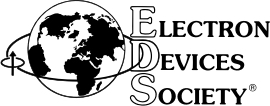Celebrated Members
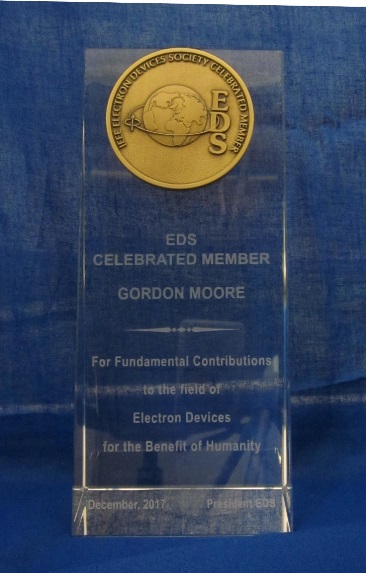
To honor and recognize esteemed EDS alumni, we are pleased to announce the EDS Celebrated Member Program.
When you are an EDS member, you're in good company. Our 10,000+ members include undergraduate students, academics, industry leaders, and recent Nobel Laureates such as George Smith and Herb Kroemer, our inaugural Celebrated Members.
Those of us in EDS can take pride in the accomplishments of these Celebrated Members and draw from the inspiration to advance our field and to achieve more because it is not only their work but ours as well, that can help transform the world around us.
For more information or to suggest a candidate for Celebrated Member status, please contact the EDS executive office.
2022

Dr. Morris Chang founded Taiwan Semiconductor Manufacturing Company Ltd. (TSMC) in 1987, served as its Chairman for 31 years, and its CEO for many of those 31 years. Dr. Chang retired from TSMC in June 2018. TSMC pioneered the dedicated silicon foundry business model and has served as a powerful force of innovation in the information industry. Prior to his career in Taiwan, Dr. Chang's career was in the United States. He served at Texas Instruments for 25 years (1958-1983), where he was Group Vice President responsible for worldwide semiconductor business for six years. Dr. Chang received his B.S. and M.S. degrees in Mechanical Engineering from M.I.T. in 1952 and 1953, and his Ph.D. in Electrical Engineering from Stanford in 1964. He has received honorary doctorates from eight universities worldwide. Dr. Chang received many honors and awards in his career. Among them were: the “Exemplary Leadership Award” of the Global Semiconductor Alliance (GSA) (1999), the IEEE Robert N. Noyce Medal for Exceptional Contributions to Microelectronics Industry (2000), Nikkei Asia Prize (2005), and the highest honor of the Semiconductor Industry Association (U.S.), its Robert N. Noyce Award (2008). He received the IEEE Medal of Honor (2011), the R.O.C. Order of the Brilliant Star (2011), the SEMI Akira Inoue award for green management (2011), Businessman of the Year by Forbes Asia magazine (2012), the Visionary Award from SPIE (the international society for optics and photonics) (2014), and the R.O.C. Order of Propitious Clouds with Special Grand Cordon (2018), and the “Asia Game Changer Award” from the Asia Society (2021). Dr. Chang is a Member of National Academy of Engineering (U.S.A.), a Laureate of the Industrial Technology Research Institute (Taiwan), a Life Member Emeritus of MIT Corporation (U.S.A.), and Fellow of the Computer History Museum (U.S.A.).
2020
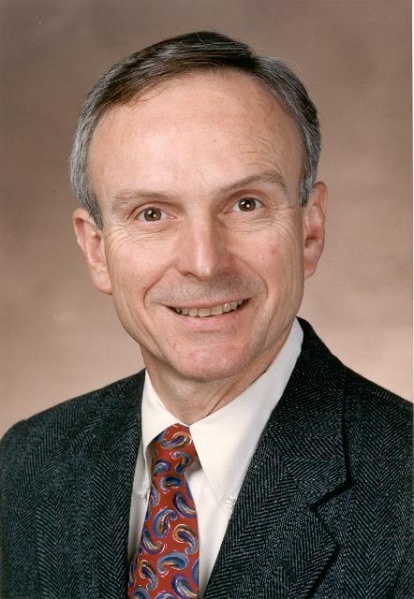
Robert W. Dutton received the B.S., M.S., and Ph.D. in Electrical Engineering degrees from the University of California,Berkeley, in 1966, 1967, and 1970, respectively.
He is currently Robert and Barbara Kleist Professor of Electrical Engineering at Stanford University, and Associate Chairfor Undergraduate Education. He has held summer staff positions at Fairchild, Bell Telephone Laboratories, Hewlett‐Packard, IBM Research, and Matsushita during 1967, 1973, 1975, 1977, and 1988 respectively. His research interestsfocus on integrated circuit process, device, and circuit technologies, especially the use of computer‐aided design (CAD)and parallel computational methods. He has published more than 200 journal articles and graduated more than fourdozen doctorate students.
Dr. Dutton was Editor of the IEEE Transactions on Computer Aided Design from 1984 to 1986, the winner of the 1987IEEE J. J. Ebers Award, 1988 Guggenheim Fellowship to study in Japan, elected to the National Academy of Engineering in 1991, 1996 Jack A. Morton Award, 2000 C&C Prize Japan, University Researcher Award, Semiconductor IndustryAssociation (2000), Phil Kaufman Award, Electronic Design Automation Consortium (2006), and 2014 Bass UniversityFellow in Undergraduate Education Program, Stanford University.
2019

Leon Chua is widely known for his invention of the Memristor and the Chua’s Circuit. His research has been recognized internationally through numerous major awards, including 17 honorary doctorates from major universities in Europe and Japan, and 7 USA patents. He was elected as Fellow of IEEE in 1974, a foreign member of the European Academy of Sciences (Academia Europea) in 1997, a foreign member of the Hungarian Academy of Sciences in 2007, and an honorary fellow of the Institute of Advanced Study at the Technical University of Munich, Germany in 2012. He was honored with many major prizes, including the Frederick Emmons Award in 1974, the IEEE Neural Networks Pioneer Award in 2000, the first IEEE Gustav Kirchhoff Award in 2005, the International Francqui Chair (Belgium) in 2006, the Guggenheim Fellow award in 2010, Leverhulme Professor Award (United Kingdom) during 2010-2011, and the EU Marie curie Fellow award, 2013. Prof. Chua is widely cited for the 12 hugely popular lectures he presented at the hp Chua Lecture Series, entitled “From Memristors and Cellular Nonlinear Networks to the Edge of Chaos”, during the fall of 2015.
2018
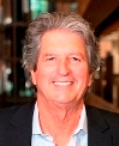 Martin A. Green
Martin A. GreenThe period from 2010 to 2018 has seen dramatic cost reductions in solar photovoltaics (PV), guaranteeing a major and possibly dominant role in future sustainable electricity supply. Although many over several decades have contributed, Professor Martin Green has played a key role in achieving this outcome.
In 1983, the highest silicon solar cell efficiency had stabilised at close to 17% efficiency for close to a decade, after more than 30 years prior development, with 20% thought a practical limit. Informed studies suggested “achievable module efficiency using silicon cells is probably limited to around 15%” (EPRI, AP-3176-SR, Sept.1983). Through a series of innovative device developments over the next two decades, Green’s research completely revamped expectations of PV’s potential by demonstrating 50% relative improvement in cell performance. Along the way, he invented and led the development of the PERC cell (Passivated Emitter and Rear Cell), now becoming the global commercial standard. Through this research, Green developed both the technological platform and the cohort of skilled personnel that helped transform the industry. Green established the Solar PV Group at the University of New South Wales (UNSW Sydney) in 1974, initially raising cell open-circuit voltage to new levels. This led him to question the validity of the then understood efficiency limits, undertaking a fundamental study of performance-limiting mechanisms. He found the limit arose from Auger recombination, where photo-excited carriers give their energy to neighbors unable to use it effectively. Based on this insight, he predicted that 25% efficiency was a feasible target and specified cell features required to reach such efficiencies (IEEE Trans. ED-31, 671, 1984).
Through the 1980s and 1990s, Green led a UNSW team that worked towards this target, increasing independently confirmed efficiency (by present standards) from 16.5%, through the 20% milestone, to 25% (Prog. PV 17, 183, 2009), holding the record for silicon cell efficiency for over 30 years. During this evolving process of world record efficiency achievements, he invented the PERC cell (SOLMAT 143, 190, 2015). At the end of 2017, PERC accounted for about a third of silicon cell manufacturing capacity (EnergyTrend, 2018) expected, due to rapidly increasing market share, to exceed 50% by the early 2020s.
Key concepts Green pioneered, now standard in high efficiency cell design, include small area contacts to limit detrimental impacts (Appl. Phys. Lett. 27, 287, 1975), thin oxide layers along cell surfaces, culminating in enshrouding virtually the entire surface by oxide in his 25% efficient cells (Solid-State Electron. 17, 551, 1974; 17, 562, 1974), inversion layers under such oxides to reinforce this action (Appl. Phys. Lett. 33, 179, 1978), moderate doping to control Auger impacts (IEEE Trans. ED-31, 671, 1984), non-ergodic geometrical light-trapping using macroscopic surface texture (J. Appl. Phys. 62, 243, 1987), electro-luminescence to monitor cell quality (Nature 412, 805, 2001), as well as invention of successive generations of devices exploiting these features (Prog. In PV 17, 183, 2009).
Recent rapid cost reductions (and future reductions through PERC cell uptake) are a direct consequence. Staff and students developing their expertise conducting this research spearheaded the establishment of the Asian PV manufacturing industry through several Australian joint ventures. Successful capital raising on US exchanges financed the rapid expansion of this manufacturing, dramatically reducing cost (PV Magazine, July 2016, p.96). In related work, Green supplied cells for the first PV system converting sunlight to electricity with 20% efficiency in 1989, with his team boosting to 40% efficiency in 2014.
Green received the Bachelor in Engineering from the University of Queensland in 1970, his PhD from McMaster University, Canada, in 1974 and a Doctor of Engineering from UNSW in 2010. He is a Fellow of the IEEE, the Australian Academy of Science and of the Royal Society, London. His work has been recognised by several major awards including the IEEE J.J. Ebers Award (1995) and the IEEE Wm R. Cherry Award (1991).
2017

Gordon E. Moore (1929-2023) and his wife Betty established the Gordon and Betty Moore Foundation in September 2000. The foundation fosters path‐breaking scientific discovery, environmental conservation, patient care improvements and preservation of the special character of the San Francisco Bay Area.
Gordon co‐founded Intel in 1968, serving initially as executive vice president. He became president and chief executive officer in 1975 and held that post until elected chairman and chief executive officer in 1979. He remained CEO until 1987 and was named chairman emeritus in 1997, stepping down in 2006.
Gordon is widely known for “Moore's Law,” which in 1965 he predicted that the number of components the industry would be able to place on a computer chip would double every year. In 1975, he updated his prediction to once every two years. Because of changing technology, the industry now states approximately every 18 months. “Moore’s Law” has become the guiding principle for the industry to deliver ever‐more powerful semiconductor chips at proportionate decreases in cost. In practical terms, what this means is faster, cheaper chips with more functionality that allows everything from a laptop computer, cell phones, GPS, cleaner car emissions/skid control/antilock brakes, and digital cameras, to medical devices that non‐invasively see inside the body, and literally hundreds of thousands of other uses.
Gordon earned a B.S. in chemistry from the University of California at Berkeley and a Ph.D. in chemistry and physics from the California Institute of Technology. He was born in San Francisco, California, on January 3, 1929.
Gordon received the Presidential Medal of Freedom, the nation's highest civilian honor, from George W. Bush in 2002. He received the National Medal of Technology from President George H. W. Bush in 1990. He is also a member of the National Academy of Engineering and a Fellow of the Institute of Electrical and Electronics Engineers. He served as chairman of the board of trustees of the California Institute of Technology from 1995 until the beginning of 2001 and continues now as a Life Trustee.
2017
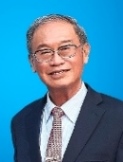
Dr. Simon M. Sze was born in Nanking, China in 1936. He received the B. S. degree from the National Taiwan University in 1957, M. S. from the University of Washington in 1960, and Ph. D. from Stanford University in 1963, all in Electrical Engineering.
Dr. Sze was with Bell Laboratories in Murray Hill, N. J., from 1963 to 1989 as a member of the Technical Staff, where he was involved in the study of advanced transistors and the development of novel device concepts. He joined the National Chiao Tung University (NCTU) in Hsinchu, Taiwan from 1990 to 2006 as a Distinguished Chair Professor. At present, he is an Honorary Chair Professor at NCTU. Dr. Sze has served as Visiting Professor to many academic institutions including the University of Cambridge, Delft University, Soochow University, Stanford University, Swiss Federal Institute of Technology, and Tokyo Institute of Technology.
He has made fundamental and pioneering contributions to semiconductor devices, especially the metal-semiconductor contacts, microwave devices, and MOSFET technology. Of particular importance is his discovery with Dr. Dawon Kahng of the floating-gate memory (FGM) effect which has subsequently given rise to a large family of memory devices including EPROM, EEPROM and Flash memory. FGM is a ground-breaking technology for long-term information storage (superseding HDD, optical disk and magnetic tape) and enables the invention of nearly all modern electronic systems such as the digital cellular phone, tablet computer, personal digital assistant, smart IC card, digital camera, digital television, portable DVD, MP3 music player, pacemaker, implantable defibrillator, global positioning system (GPS), and anti-lock braking system (ABS). FGM has also empowered technology for the development of artificial intelligence, big data, cloud computing, internet of things, robotics, and solid-state drive.
Dr. Sze has authored or coauthored over 350 technical papers. He has written and edited 16 books. His book “Physics of Semiconductor Devices ” ( Wiley, 1969; 2nd Ed, 1981; 3rd Ed, with Dr. K. K. Ng, 2007 ) is one of the most cited works in contemporary engineering and applied science publications (over 47,500 citations according to Google Scholar ). Dr. Sze has received the IEEE J. J. Ebers Award, the National Endowed Chair Professor Award, the Flash Memory Summit Lifetime Achievement Award, and the National Science and Technology Prize. He is a Life Fellow of IEEE, an ITRI Laureate, an Academician of the Academia Sinica, a foreign member of the Chinese Academy of Engineering, and a member of the US National Academy of Engineering.
2016

Professor Mildred Dresselhaus (1930 ‐ 2017) is a native of the Bronx, and attended New York City public schools through junior high school, and Hunter College High School. She began her independent career in 1960 as a member of the research staff at the MIT Lincoln Laboratory after her PhD at the University of Chicago (1958) and a two-year postdoc at Cornell University. During that time she switched from research on superconductivity to magneto-optics, and carried out a series of experiments that led to a fundamental understanding of the electronic structure of semi-metals, especially graphite. This led to her appointment as an MIT faculty member and eventually to appointment as an Institute Professor in the departments of Physics and Electrical Engineering. She served as the Director of the Office of Science at the U.S. Department of Energy in 2000-01, and has been an officer in many national organizations in physics, engineering, and related areas. Honors and awards include 36 honorary doctorates worldwide, and the National Medal of Science, the Nicholson Medal for Humanitarian Service, the Compton Award, the Fermi Prize, the Kavli Prize, and the U.S. Presidential Medal of Freedom.
Professor Dresselhaus’s research over the years has covered a wide range of topics in condensed matter and materials physics. She is best known for her work on carbon science and carbon nanostructures, as well as nanoscience and nanotechnology more generally. She is also one of the researchers responsible for the resurgence of the thermoelectrics research field through her early work on low-dimensional thermoelectricity in the early 1990s. She co-chaired a Department of Energy study on “Basic Research Needs for the Hydrogen Economy” in 2003 and more recently co-chaired the National Academy Decadal Study of Condensed Matter and Materials Physics. She has co-authored more than 1700 publications including books, book chapters, invited review articles, and peer-reviewed journal articles. Professor Dresselhaus remains involved in activities that promote the increased participation of women in science and engineering. She is an enthusiastic chamber music player where she plays violin and viola, and enjoys spending time with her husband, four children, and five grandchildren.
2015
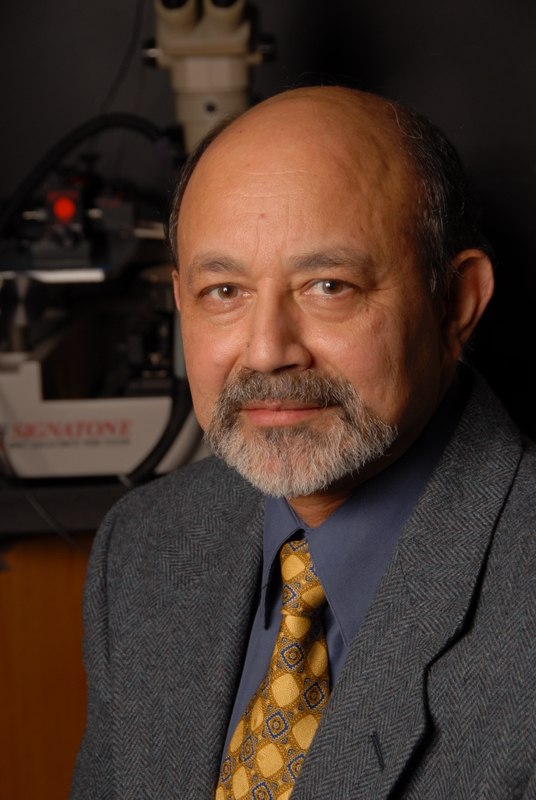
Dr. Baliga is an internationally renowned scientist, prolific author of 19 books and over 550 publications, and an established educator in the field of power semiconductor devices with 120 U.S. Patents to his name. Among his inventions, the most widely commercialized device is the Insulated Gate Bipolar Transistor (IGBT) extensively used around the globe for compact fluorescent lamps, air-conditioning, home appliance controls, robotics, electric-cars/bullet-trains and compact defibrillators projected by the AMA to save 100,000 lives a year. The energy efficiency improvements derived from IGBTs have saved world-wide consumers more than $ 24 Trillion while reducing carbon dioxide emissions by more than 100 Trillion pounds.
The University of North Carolina system selected him for the 1998 O. Max Gardner Award, which recognizes the faculty member among the 16 constituent universities who has made the greatest contribution to the welfare of the human race. In 2011, North Carolina State University conferred up on him the Alexander Quarles Holladay Medal of Excellence, the highest award given to a faculty member. At the age of 45, he was elected to the prestigious National Academy of Engineering, the highest honor in the engineering profession. Dr. Baliga is also a serial entrepreneur having founded four successful companies in North Carolina with venture capital financing.
President Obama presented the National Medal of Technology and Innovation, the highest honor conferred by the United States Government to an Engineer, to Dr. Baliga on October 21, 2011 at a ceremony in the White House. He received the North Carolina Award for Science, the highest honor given by the state to a civilian, from Governor Purdue in October 2012. In 2015, he received the Global Energy Prize in Saint Petersburg, Russian Federation, for the invention, development, and commercialization of the Insulated Gate Bipolar Transistor. He will be inducted into the National Inventors Hall of Fame for his invention of the Insulated Gate bipolar Transistor in 2016.
Prof. Baliga is a Life Fellow of the IEEE. His numerous IEEE awards include the 1991 Newell Award, the highest recognition given by the IEEE Power Electronics Society; the 1993 Morris E. Liebman Award for his contributions to the emerging Smart Power Technology, the 1998 J.J. Ebers Award, the highest recognition given by the IEEE Electron Devices Society; the 1999 Lamme Medal given by the IEEE Board of Governors at Whitehall Palace in London; and the highest IEEE award, the IEEE Medal of Honor sponsored by the IEEE Foundation, in Amsterdam NL on August 24, 2014.
2015
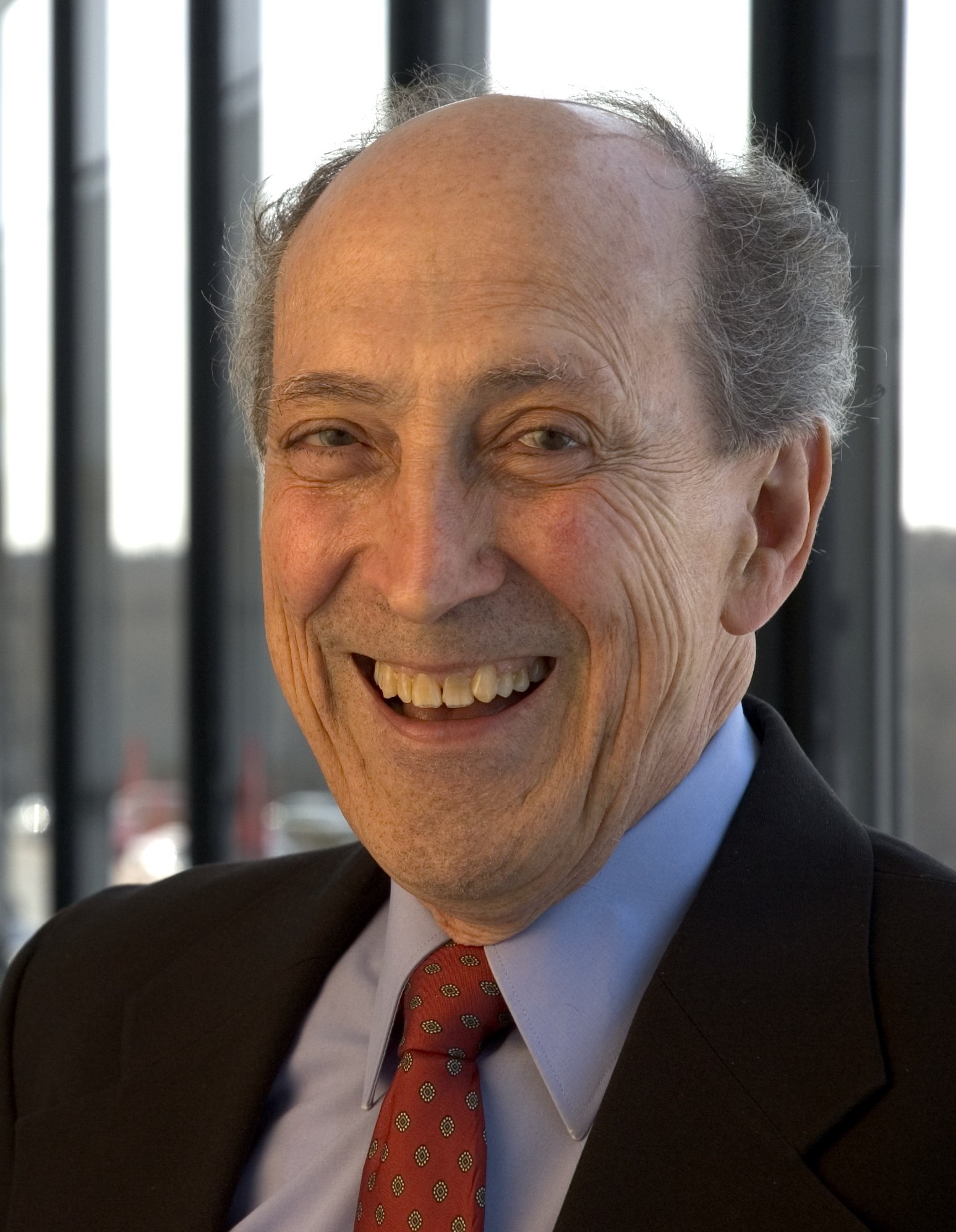
Robert H. Dennard was born in Terrell, TX, in 1932. He received the B.S. and M.S. Degrees in electrical engineering from Southern Methodist University, Dallas, TX, in 1954 and 1956 respectively, and the Ph.D. Degree from Carnegie Institute of Technology, Pittsburgh, PA in 1958. He then joined IBM Research Division where his early experience included the study of new digital devices and circuits for logic and memory applications, and the development of advanced data communication techniques.
Since 1963 Dr. Dennard has been at the IBM Thomas J. Watson Research Center, Yorktown Heights, NY, where he has been involved in microelectronics research and development from the early days onward. His primary work has been in MOS transistors and integrated digital circuits using them. In 1967 he invented the dynamic RAM memory cell used universally in computers today. With coworkers he developed the concept of MOS transistor scaling in 1972, which is often cited as a guiding principle for microelectronics. He was appointed an IBM Fellow in 1979. He has contributed numerous papers on advances in CMOS technology and on prospects and challenges of scaling that technology to very small dimensions.
Dr. Dennard is a Fellow of IEEE and a member of the National Academy of Engineering and the American Philosophical Society. He holds 67 US patents and has published over 100 technical papers. He has received many honors including the National Medal of Technology from President Reagan in 1988 and induction into the National Inventors Hall of Fame in 1997. In 2009 he was awarded the Charles Stark Draper Prize by the National Academy of Engineering. He also was honored with the 2009 IEEE Medal of Honor. Dr. Dennard received the prestigious Kyoto Prize in 2013.
2012
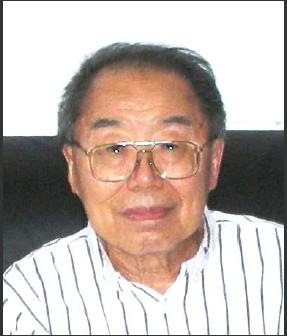
Chih‐Tang Sah is the Academician Professor in the Physics Department of Xiamen University, Xiamen, China since April 2010. He has been studying silicon diodes and transistors for 70 years since 1942, when a lightening fireball passed over his head and burnt open the 100‐foot‐long radio antenna of the Xiamen University Radio Physics Laboratory in Changting, China.
He taught at two American Universities for 50 years from 1961 to 2010, and directed 50 doctoral theses in Physics and in Electrical and Computer Engineering and 35 MS theses. During this and previous periods, he also directed the research of 50 industrial and academic post‐doctoral associates. With his graduate students and research associates, he published about 300 journal articles, and gave about 150 keynotes and invited talks in China, Europe, Japan, Singapore, Taiwan and the United States, on transistor physics, technology, and evolution history.
He was listed in a survey released in 1981 by the Institution of Scientific Information (ISI) of Philadelphia as one of the world’s 1000 most cited scientists during 1965‐1978. Professor Sah published a 3‐volume best‐seller textbook (1991, 1993, 1996) on transistor electronics for college sophomores and juniors, which are still in use today, titled Fundamentals of Solid‐State Electronics. Sah has also edited about ten monographs on compact transistor models and integrated circuit invention history, published in the World Scientific Publishing Company series, ASSET (Advances in Solid‐ State Electronics and Technology), which he founded in 1991. Tang Sah and his late younger brother, Chih‐Han Sah were brought over to the United States (1949) by the late William (Bill) and Dorothy Everitt to start their college education at the University of Illinois in Urbana‐ Champaign (UIUC). Tom received (1953) two BS degrees (Physics and Electrical Engineering) from UIUC. He then went to Stanford and received the MS (1954) and PhD (1956) degrees, on the external circuit traveling tubes, under the tutelage of Karl R. Spangenberg. Tang Sah’s industrial career in solid‐state electronics began (1956‐1959) under William Shockley and continued (1959‐ 1964) at the R&D Laboratory of Fairchild Semiconductor Corporation with Robert N. Noyce and Gordon E. Moore, where he helped hire, direct and manage a transistor Physics and Technology team of 64 members who developed the first generation manufacturing technology of silicon bipolar and MOS integrated circuits.
At the universities, Tom Sah has continued to help the semiconductor manufacturing companies (including IBM, Intel, TSMC) by technology advising to his former graduate students who are running their companies. He also served as a consultant to several US government agencies while teaching at UIUC. For contributions in transistor physics, in integrated circuit manufacturing technology, and in bringing up his graduate students and associates who have advanced the silicon integrated circuit industry, Chihtang Sah has been recognized six times by the Electron Device Society (EDS) of the IEEE: the Browder J. Thompson best paper prize for an author under thirty (1962); a Fellow (1969); a Life Fellow (1995); the J. J. Ebers (1981) and Jack Morton (1989) Awards; and the EDS Celebrated Member (2012) to serve as a role model. He was also elected (1971) a Fellow of the American Physical Society for completing five Physics PhD theses. For these efforts, he was given the Franklin Institute (1975) Certificate of Merit on MOS technology, and recognized by the two Industry Associations, the first Achievement Award in High Technology (1984) from the Asian American Manufacturing Association in San Jose, California and the fourth University Research Award (1998) from the United States Semiconductor Industry Association (US SIA).
He was conferred the Doctor Honoris Causa (1975) by K. Universiteit de Leuven, Belgium, the honorary doctorate (2003) by Taiwan Chao‐Tung University, and the National Honorary Doctorate of China (2010) nominated by Xiamen University. He has been appointed an Honorary Professor by three Universities in China, Peking (2002), Tsinghua (2003) and Xiamen (2004). He was given the first Pioneer Recognition Award (2002) by US Committee‐ 100, and the second annual Distinguished Lifetime Achievement Award (2003) by the Asian American Engineer of the Year (AAEOY), nominated by the Chinese Institute of Engineers (CIE/USA). He was elected a member of the US National Academy of Engineering (1986), Academia Sinica in Taipei (1998) and Chinese Academy of Sciences in Beijing (2000).
2015
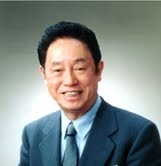
Leo Esaki was born in Osaka, Japan in 1925. Esaki completed work for a B.S. in Physics in 1947 and received his Ph.D in 1959, both from the University of Tokyo. Esaki was an IBM Fellow and engaged in semiconductor research at the IBM Thomas J. Watson Research Center, Yorktown Heights, New York, from 1960 to 1992. Prior to joining IBM, he worked at the Sony Corp. where his research on heavily-doped Ge and Si resulted in the discovery of the Esaki tunnel diode; this device constitutes the first quantum electron device. Since 1969, Esaki had, with his colleagues, pioneered "designed semiconductor quantum structures" such as man-made superlattices, exploring a new quantum regime in the frontier of semiconductor physics.
The Nobel Prize in Physics (1973) was awarded in recognition of his pioneering work on electron tunneling in solids. Other awards include the Nishina Memorial Award (1959), the Asahi Press Award (1960), the Toyo Rayon Foundation Award for the Promotion of Science and Technology (1960), the Morris N. Liebmann Memorial Prize from IRE (1961), the Stuart Ballantine Medal from the Franklin Institute (1961), the Japan Academy Award (1965), the Order of Culture from the Japanese Government (1974), the American Physical Society International Prize for New Materials (1985), the IEEE Medal of Honor (1991), the Japan Prize (1998) and also the Grand Cordon of the Order of the Rising Sun, First Class from the Japanese Government (1998).
He serves on numerous international scientific advisory boards and committees. Dr. Esaki was elected a Fellow of the American Academy of Arts and Sciences (1974), a member of the Japan Academy (1975), a Foreign Associate of the National Academy of Science (1976) and the National Academy of Engineering (1977), a member of the Max-Planck-Gesellschaft (1989), and a foreign member of the American Philosophical Society (1991), Russian Academy of Sciences (1994), and Italian National Academy of Science (1996).
After returning to Japan, he had assumed the position of President, the University of Tsukuba for six years from 1992 to 1998, and President, Shibaura Institute of Technology from 2000 to 2005. During his tenure, he made great contributions to the reform and internationalization of the Japanese educational system as a member of many committees on education. He has been working at the Science and Technology Promotion Foundation of Ibaraki as Chairman appointed in April, 1998, and Tsukuba International Congress Center as Director-General appointed in 1999, also Science Academy of Tsukuba as Chairman in 2000. In April, 2006 he has assumed the position of President, Yokohama College of Pharmacy.
2015
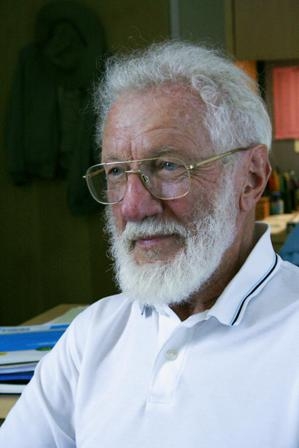
Herbert Kroemer was born in 1928 in Weimar, Germany. He received a Doctorate in Theoretical Solid-State Physics in 1952 from the University of Göttingen, Germany, with a dissertation on high-field electron transport in the collector junction of the then-new transistor. One of the Göttingen professors, Fritz Sauter, had organized a seminar sequence, where the students had to give in-depth reports on selected key papers in the emerging semiconductor field. Kroemer was assigned the 1949 paper by Bardeen and Brattain on Physical Principles Involved in Transistor Action. The paper mentioned a few as-yet unexplained observations, and during his presentation, Kroemer suggested that the drift velocity of the charge carriers might decrease again with increasing field at sufficiently high fields. Sauter was intrigued and suggested that this might be a good topic for a dissertation.
Ultimately, the observations in question had a different explanation. But the dissertation led to a career in the physics and technology of semiconductors and semiconductor devices, in a number of research laboratories in Germany and the U.S. Since 1976, he has been with the University of California at Santa Barbara.
Dr. Kroemer is the originator of several device concepts, including the heterostructure bipolar transistor, and the double-heterostructure laser. During the ‘60s, he also worked on microwave device problems, and in 1964 he was the first to publish an explanation for the Gunn Effect. With the emergence of molecular beam epitaxy in the mid-‘70s, he returned to heterostructure devices, and he was one of the first to apply the emerging new technology to new and unconventional materials combinations, such as GaP-on-Si and InAs/(Al,Ga)Sb structures, making several contributions to the development of MBE itself.
Dr. Kroemer is a Fellow of the IEEE and of the APS, and a Member of both the National Academy of Engineering and the National Academy of Sciences. He holds several honorary doctorates from universities in Germany, Sweden, and the USA. He has received numerous awards, including the 2000 Nobel Prize in Physics, “for developing semiconductor heterostructures used in high-speed and opto-electronics,” and the 2002 IEEE Medal of Honor.
His main research interests continue to be in the physics and technology of semiconductor heterostructures.
His work as a scientist has benefitted greatly from a happy 60-year marriage to his wife Marie Louise, from Berlin, Germany. Their private lives are centered around raising their 12-year old grandson, Ryan, whom they adopted a few years ago.
2015
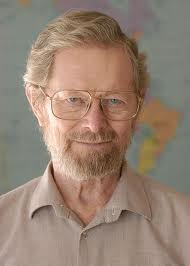
George Smith
It goes without saying that the field of electron device engineering has revolutionized, and in many ways defines, 21st century life. As a part of EDS, each of us can take pride in our society’s members’ accomplishments. We should draw from them inspiration to advance our field and to achieve more because it is not only their work, but ours as well, that can help transform the world around us.
It is in this spirit that the EDS Celebrated Member program was created, with the inaugural Celebrated Member Award presented to Electron Device Letters founding editor and 2009 Nobel laureate for Physics, George E. Smith. The presentation was made by EDS President, Renuka Jindal at the Photovoltaics Specialists Conference held in Hawaii in June.The audience in the packed reception hall was treated to George’s recounting of how he and his colleague Willard Boyle (a fellow EDS member and with whom George shares the 2009 Nobel Prize for Physics) developed the Charged-Coupled Device (CCD) at the famous Bell Laboratories in New Jersey.
They were tasked with developing a new platform for information storage. The device they initially sketched was an image sensor based on Einstein's photoelectric effect, in which arrays of photocells emit electrons in amounts proportional to the intensity of incoming light. The electron content of each photocell could then be read out, transforming an optical image into a digital one. The charge-coupled device they created gave rise to the first CCD-based video cameras, which appeared in the early 1970s.
“It took about an hour and half to design the CCD,” joked George, “but it took 40 years for us to get the Nobel.”
